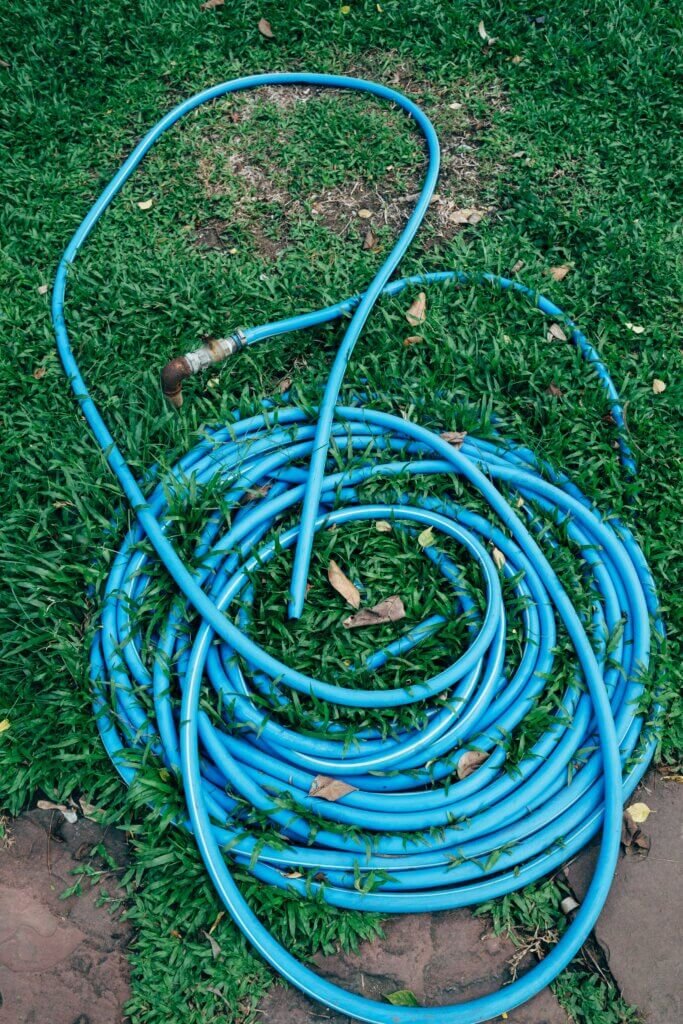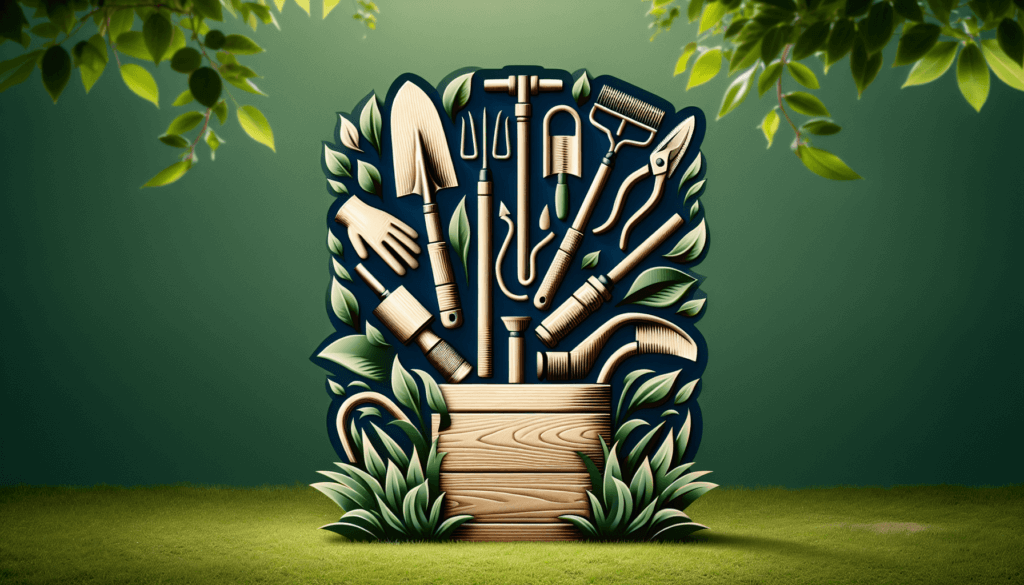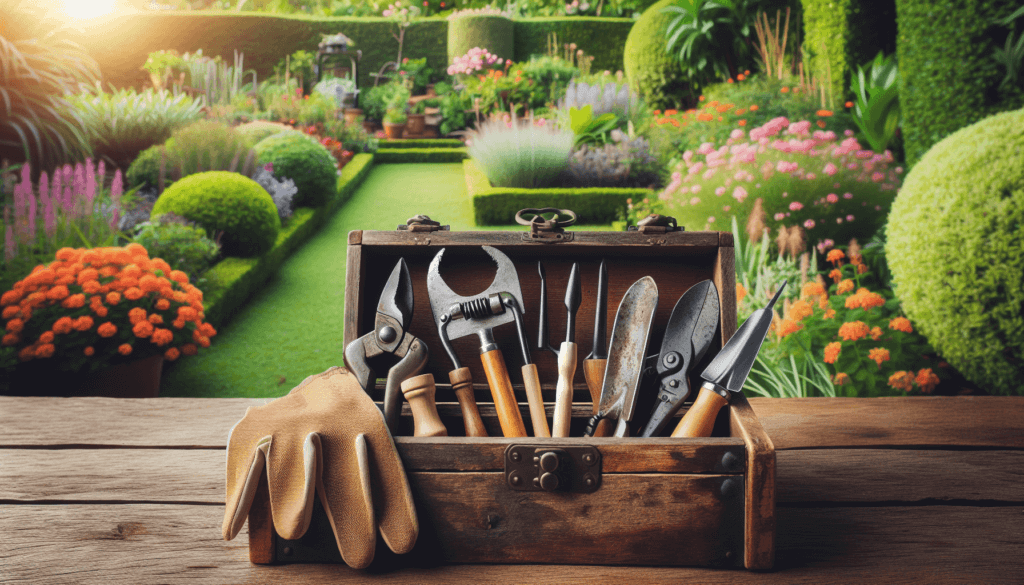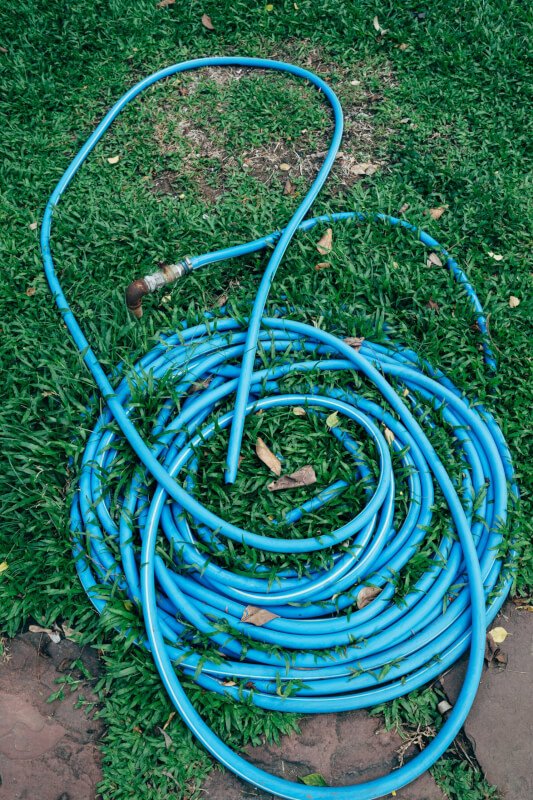Are you ready to roll up your sleeves and get your hands dirty in your garden? Before you tackle any DIY projects, make sure you have the right tools at your disposal. In this article, we’ll explore the top 10 essential tools that will help you transform your garden into a thriving oasis. From the trusty shovel that will be your best companion during planting, to the versatile garden gloves that will keep your hands safe and clean, these tools are a must-have for any budding gardener. So grab your hat and sunscreen, because we’re about to embark on an exciting journey of garden DIY projects!

Shovel
Types of shovels
When it comes to gardening, having the right tools can make all the difference. One of the most essential tools for any gardener is a shovel. Shovels come in various types, each designed for specific tasks.
Spade Shovel: The spade shovel is the most common type of shovel that you will come across. It has a flat, squared-off blade that is ideal for digging holes, edging flower beds, and slicing through stubborn roots. It is a versatile tool that every gardener should have in their arsenal.
Round-Point Shovel: As the name suggests, the round-point shovel has a rounded blade. This type of shovel is perfect for moving soil, gravel, or other loose materials. Its curved shape allows for efficient scooping and lifting, making it a go-to tool for heavy-duty tasks.
Garden/Trenching Shovel: The garden or trenching shovel has a long, narrow blade with a pointed tip. This type of shovel is designed for digging trenches, creating furrows for planting rows of vegetables, and transplanting small plants. Its narrow blade makes it easier to work in tight spaces.
Choosing the right shovel for your project
Selecting the right shovel for your gardening project is crucial to ensure efficiency and ease of use. Here are a few factors to consider when choosing a shovel:
Purpose: Consider the main tasks you will be using the shovel for. If you primarily need it for digging and edging, a spade shovel would be the best choice. For moving large amounts of soil or materials, a round-point shovel is more suitable. If you often work on trenching or planting rows, a garden or trenching shovel would be ideal.
Blade Material: Shovel blades are commonly made of either steel or plastic. While steel blades are more durable and long-lasting, plastic blades are lighter and less likely to rust. Choose a material that suits your needs and preferences.
Handle Length: Shovel handles come in various lengths, and selecting the right one depends on your height and the tasks you will be performing. A longer handle provides more leverage but can be heavier and cumbersome. Consider your comfort and the maneuverability required for your gardening projects.
Proper use and maintenance of a shovel
To ensure the longevity and optimal performance of your shovel, it is important to use and maintain it correctly. Here are some tips:
Digging Technique: When using a shovel, remember to bend your knees and lift with your legs to avoid straining your back. Push the blade into the soil at a slight angle and use your foot to apply pressure and drive the shovel deeper.
Cleaning: After each use, it is essential to remove any dirt or debris from the shovel blade. A simple rinse with water and a brush can do the trick. Make sure to dry the shovel thoroughly before storing to prevent rust.
Storage: Store your shovel in a dry place to prevent rusting. If possible, hang it on a wall or use a shovel rack to keep it off the ground. Regularly check for any signs of damage or wear and replace the shovel if necessary.
By selecting the right type of shovel for your project, using it correctly, and maintaining it properly, you can ensure that this essential gardening tool serves you well for years to come.
Pruning Shears
Different types of pruning shears
Pruning shears, also known as hand pruners or secateurs, are indispensable tools for any gardener. They are designed for precise pruning and trimming of plants, ensuring their health and enhancing their aesthetics. Here are the different types of pruning shears:
Bypass Pruners: Bypass pruners are the most commonly used type of pruning shears. They have a curved blade that bypasses a counter blade, similar to a pair of scissors. Bypass pruners provide clean cuts, making them ideal for trimming live branches, stems, and delicate plants.
Anvil Pruners: Anvil pruners feature a straight blade that closes onto a flat, metal anvil. This design allows for a crushing action, making them suitable for cutting deadwood and tough woody stems. Anvil pruners are not recommended for use on live branches as they can cause damage.
Ratchet Pruners: Ratchet pruners have a unique mechanism that allows for easier cutting of thick branches. They utilize a ratcheting system that applies increasing force with each squeeze, reducing the effort required. These pruners are excellent for individuals with reduced hand strength.
Selecting the right pruning shears for different plants
Choosing the appropriate pruning shears depends on the type of plants you will be working with. Here are some guidelines:
Bypass Pruners: Bypass pruners are versatile and suitable for most pruning tasks. They are ideal for trimming live branches, shaping shrubs, and deadheading flowers. Bypass pruners provide clean cuts that promote plant health.
Anvil Pruners: Anvil pruners are best suited for cutting tough woody stems and branches. They can be used for removing deadwood, pruning old and thick stems, and preparing plant material for composting. Avoid using anvil pruners on live branches, as they can cause crushing damage.
Ratchet Pruners: Ratchet pruners are particularly beneficial when dealing with thicker branches. They provide increased cutting power with minimal effort, making them suitable for individuals with limited hand strength. Ratchet pruners are recommended for heavy-duty pruning jobs.
Proper pruning techniques
Proper pruning techniques are essential to ensure the health and beauty of your plants. Follow these guidelines when using pruning shears:
Start with Clean and Sharp Blades: Before pruning, make sure your pruning shears are clean and sharp. Clean the blades with rubbing alcohol to prevent the spread of disease, and sharpen them using a sharpening stone or a file. Dull blades can crush plant tissue and lead to damage.
Identify Dead or Diseased Branches: Begin by removing any dead or diseased branches. These branches can harbor pests or diseases, impacting the overall health of the plant. Make clean cuts just above a bud or lateral branch to promote new growth.
Thin Out Overcrowded Growth: Pruning can help improve airflow and sunlight penetration within a plant. Remove any overcrowded or crossing branches to allow for better air circulation and prevent disease.
Maintain an Open Center for Shrubs and Trees: For shrubs and trees, aim to maintain an open center or a balanced shape. Remove any branches that grow inward or downward, keeping the plant’s natural form in mind.
Regularly Disinfect Blades: To prevent the spread of diseases, especially when pruning multiple plants, regularly disinfect the pruning shears. Dip the blades in a solution of one part bleach to nine parts water for a few minutes, then rinse and dry them thoroughly.
By understanding the different types of pruning shears, selecting the appropriate tool for each plant, and using proper pruning techniques, you can confidently maintain the health and appearance of your garden.
Garden Fork
Benefits of using a garden fork
A garden fork, with its multiple sturdy tines, is a valuable tool for any gardener. Here are some benefits of using a garden fork:
Soil Aeration: Proper aeration of the soil is vital for healthy plant growth. Using a garden fork to loosen and lift the soil helps improve its structure, allowing better water drainage, root penetration, and nutrient absorption. A well-aerated soil also prevents compaction.
Weed Removal: Garden forks are effective in uprooting weeds from the soil. The tines dig deep, loosening the weed’s root system, making it easier to remove. This helps in reducing weed competition and maintaining a weed-free garden.
Turning Compost: Compost is a key component in enriching the soil and providing nutrients to plants. A garden fork is an excellent tool for aerating and turning compost piles. By regularly turning the compost, you accelerate the decomposition process and create nutrient-rich compost for your garden.
Choosing the right garden fork for your soil type
Selecting the right garden fork for your specific soil type is essential to ensure efficient and effective use. Here are some considerations when choosing a garden fork:
Number of Tines: Garden forks typically come with four or more tines. If you have heavy clay or compacted soil, choose a garden fork with more tines to provide better soil penetration. For lighter soils, a fork with four tines would usually suffice.
Tine Material: Garden fork tines are commonly made of steel or stainless steel. Steel tines offer durability and strength, making them suitable for heavy-duty tasks. Stainless steel tines, on the other hand, are resistant to rust and corrosion, making them ideal for gardens with high moisture levels.
Handle Length: Consider the length of the handle when choosing a garden fork. A longer handle provides greater leverage and makes it easier to work in large areas or when digging deep into the soil. However, a longer handle can be heavier and more difficult to control.
Using a garden fork for soil aeration and turning compost
To make the most of your garden fork and enjoy its benefits, follow these tips for soil aeration and turning compost:
Soil Aeration: Start by selecting the area of soil you want to aerate. Insert the tines of the garden fork into the soil, using your foot to apply pressure if necessary. Pull the handle backward to lift and loosen the soil. Repeat this process, moving inch by inch, until the entire area is aerated.
Weed Removal: For weed removal, identify the target weed and position the tines of the garden fork close to its base. Push the fork into the soil, making sure to go deep enough to loosen the roots. Gently lift and twist the fork to remove the weed, being careful not to spread weed seeds.
Turning Compost: When turning compost, start by positioning your garden fork at the outer edge of the compost pile. Push the tines into the pile and twist slightly to lift and turn the compost. Move along the outer edge of the pile, repeating the process until you have turned the entire pile.
Safety Precautions: Always exercise caution when using a garden fork. Avoid prying or levering against hard objects, as this can damage the tines or cause injury. Wear gloves and closed-toe shoes to protect your hands and feet from potential accidents.
By utilizing a garden fork for soil aeration, weed removal, and compost turning, you can create optimal growing conditions for your plants and cultivate a flourishing garden.
Garden Gloves
Types of garden gloves
Garden gloves provide essential protection for your hands while working on various gardening tasks. Here are some different types of garden gloves:
Leather Gloves: Leather gloves are known for their durability and resistance to punctures and thorns. They offer excellent protection against sharp objects and provide a good grip. Leather gloves are ideal for heavy-duty tasks, handling rough materials, and working with thorny plants.
Nitrile Gloves: Nitrile gloves are made of synthetic rubber and are an excellent choice for individuals with latex allergies. They are resistant to punctures and provide a snug fit, allowing for excellent dexterity. Nitrile gloves are suitable for general gardening tasks, such as planting, weeding, and pruning.
Cotton Gloves: Cotton gloves are lightweight and breathable, providing added comfort during warmer months. While they offer minimal puncture protection, they are suitable for light gardening tasks, such as transplanting seedlings and handling delicate plants. Cotton gloves can also be used as a liner under other gloves for added warmth.
Choosing the right gloves for different tasks
Selecting the appropriate garden gloves for different tasks is essential to ensure the right balance of protection and dexterity. Here are some guidelines:
Heavy-Duty Tasks: When handling heavy-duty tasks, such as clearing thorny brush or working with sharp tools, opt for leather gloves. Their thick, durable material will protect your hands from punctures and cuts.
Wet Conditions: For tasks that involve water exposure, such as watering plants or handling wet soil, choose gloves made of nitrile or waterproof material. These gloves will keep your hands dry while providing flexibility and grip.
Gentle Tasks: For delicate tasks that require more dexterity, such as sowing seeds or transplanting seedlings, cotton gloves are a suitable choice. They offer light protection and allow for a closer feel with the plants.
Benefits of using gloves for protection
Using garden gloves for protection offers several benefits, including:
Injury Prevention: Garden gloves protect your hands from cuts, punctures, and scrapes that can occur when handling tools, sharp branches, or thorny plants. They act as a barrier, reducing the risk of injury while working in the garden.
Allergen Protection: Some plants, such as poison ivy or certain sap-producing plants, can cause allergic reactions in susceptible individuals. Wearing gloves provides a protective layer between your skin and potential allergens, minimizing the risk of contact dermatitis.
Hygiene: Wearing garden gloves can help maintain good hygiene by preventing direct contact with soil, dirt, and other potential contaminants. This is especially important if you have any open cuts or wounds on your hands.
Comfort: Garden gloves offer added comfort, especially when working for extended periods. They reduce the friction between tools and your hands, providing cushioning and preventing blisters.
Remember to clean and dry your gloves after each use to prevent the growth of bacteria and fungi. Keeping a spare pair of gloves handy is also a good idea, as it allows you to switch to a fresh pair if your gloves become wet or damaged.
By choosing the right type of garden gloves for specific tasks and consistently wearing them during your gardening endeavors, you can ensure protection, comfort, and productivity in your garden.

Hand Trowel
Features of a hand trowel
A hand trowel is a small, handheld tool that is indispensable for a wide range of gardening tasks. Here are some features of a hand trowel:
Blade: The blade of a hand trowel is typically made of stainless steel or carbon steel. It is sturdy yet narrow, allowing for precise digging, planting, and transplanting. The size and shape of the blade may vary, with some trowels having a pointed tip, while others have a more rounded one.
Handle: The handle of a hand trowel is usually made of wood, plastic, or metal. It provides a comfortable grip, allowing for effective control and maneuverability. The handle may have a curved shape or ergonomic design to minimize hand strain and fatigue.
Measurement Markings: Some hand trowels come with measurement markings on the blade. These markings allow you to gauge the depth of planting, ensuring accurate placement of seeds and young plants.
Selecting the right hand trowel for planting and transplanting
Choosing the right hand trowel for planting and transplanting is essential to ensure efficiency and ease of use. Consider the following factors when selecting a hand trowel:
Blade Size: Hand trowels come in various blade sizes. For general planting and bed maintenance, a trowel with a blade width of around 2-3 inches is suitable. A narrower blade works well for working in tight spaces or planting in containers.
Blade Material: Stainless steel and carbon steel are the most common materials used for hand trowel blades. Stainless steel is rust-resistant and easy to clean, making it a durable option. Carbon steel is known for its strength and sharpness, ideal for heavy-duty tasks.
Handle Comfort: The handle should provide a comfortable grip that allows for easy maneuverability. Consider the material, shape, and ergonomics of the handle when selecting a hand trowel. Test out different options to find one that feels comfortable in your hand.
Proper use and maintenance of a hand trowel
Proper use and maintenance of your hand trowel are crucial to ensure its longevity and optimal performance. Follow these guidelines:
Digging Technique: To use a hand trowel, hold it firmly and insert the blade into the soil at a slight angle. Use your wrist and arm to apply pressure, driving the trowel into the ground. Twist the handle as necessary to loosen the soil and create a hole for planting or transplanting.
Cleaning: After each use, remove any dirt or debris from the blade and handle of your hand trowel. Wipe the blade with a damp cloth or rinse it with water if necessary. Dry the trowel thoroughly before storing to prevent rusting.
Sharpening: Over time, the blade of your hand trowel may become dull. To maintain its sharpness, use a sharpening stone or a file to lightly sharpen the edge. Follow the manufacturer’s instructions or consult a gardening expert for guidance.
Storage: Store your hand trowel in a dry place to protect it from moisture and rust. If possible, hang it on a tool rack or store it in a tool shed. Avoid leaving it exposed to the elements, as prolonged exposure can lead to damage.
By selecting the right hand trowel for your gardening needs, using it correctly, and maintaining it properly, you can enjoy the convenience and effectiveness of this versatile tool in your garden.
Garden Hose
Different types of garden hoses
A garden hose is an essential tool for watering plants, cleaning equipment, and various other garden tasks. Here are different types of garden hoses:
Vinyl Hoses: Vinyl hoses are lightweight and affordable. They are best suited for light-duty tasks such as watering small gardens or washing vehicles. However, vinyl hoses are more prone to kinking and cracking, making them less durable than other options.
Rubber Hoses: Rubber hoses are durable and more resistant to kinking and cracking compared to vinyl hoses. They can withstand hot water temperatures and are suitable for heavy-duty use. Rubber hoses tend to be more expensive but are a long-lasting investment.
Reinforced Hoses: Reinforced hoses, often referred to as “reinforced vinyl” or “reinforced rubber” hoses, are built with an additional layer of mesh or fabric to enhance their strength and durability. These hoses can withstand higher water pressure and are ideal for medium to heavy-duty tasks.
Selecting the right hose for your gardening needs
Choosing the right garden hose depends on your specific gardening needs and preferences. Consider the following factors when selecting a hose:
Length: Determine the length of hose you require based on the size of your garden or the distance from the water source to the farthest plants. Ensure that the hose is long enough to cover the necessary area without stretching or pulling.
Diameter: Garden hoses come in various diameters, typically ranging from ⅜ inch to ¾ inch. Larger diameter hoses can deliver more water and are suitable for heavy-duty tasks. However, they can be heavier and more challenging to maneuver. Choose a diameter that meets your watering needs while considering ease of use.
Hose Fittings: Check the fittings at the ends of the hose to ensure they are compatible with your water source and attachments. Common fittings include female and male threaded connectors, quick-connect adapters, and nozzle connectors. Choose fittings that are compatible with your watering equipment and can provide a secure connection.
Proper care and storage of a garden hose
Taking proper care of your garden hose is essential to ensure its longevity and efficient performance. Here are some tips for care and storage:
Avoid Kinks: To prevent kinking, make sure the hose is uncoiled and laid out straight before use. When coiling the hose after use, do it in large loops rather than tight coils, which can cause kinks and internal damage.
Drain and Store Properly: After use, drain all the water from the hose to prevent freezing or the growth of mold and bacteria. Store the hose in a cool, dry place away from direct sunlight. Consider using a hose reel or hanger to keep the hose organized and protected.
Avoid Exposure to Extreme Temperatures: Avoid exposing the hose to extreme hot or cold temperatures, as this can cause damage over time. If you live in an area with freezing temperatures, it is advisable to store the hose indoors during winter or use a heated hose.
Check for Leaks and Damage: Regularly inspect your hose for any leaks, cracks, or damage. Replace worn-out washers or fittings promptly to prevent water wastage. If you notice any significant damage, consider replacing the hose to ensure efficient watering.
By selecting the right type and size of garden hose, using it correctly, and taking proper care during storage, you can enjoy the convenience and effectiveness of this essential gardening tool.

Wheelbarrow
Benefits of using a wheelbarrow in the garden
A wheelbarrow is an invaluable tool that can greatly assist in various gardening tasks. Here are some benefits of using a wheelbarrow in the garden:
Heavy Load Transport: One of the primary advantages of a wheelbarrow is its ability to transport heavy loads with minimal effort. Whether it’s moving a pile of soil, mulch, compost, or plants, a wheelbarrow makes the task much more manageable, saving time and physical strain.
Efficient Debris Collection: A wheelbarrow is excellent for collecting and removing garden debris, such as fallen leaves, trimmings, or weeds. Its large capacity allows for efficient cleanup, helping to maintain a tidy garden space.
Versatility: Besides transporting heavy loads and collecting debris, a wheelbarrow has numerous other functionalities. It can be used as a makeshift workbench, a platform for mixing soil or compost, or even a raised bed for temporarily housing plants.
Stability and Maneuverability: Wheelbarrows are stable and easy to maneuver, even in uneven terrain. Their two-wheel design provides better balance and prevents tipping, allowing for smooth navigation around the garden.
Choosing the right wheelbarrow for your needs
Choosing the right wheelbarrow depends on your specific gardening needs and the type of tasks you will be performing. Consider the following factors when selecting a wheelbarrow:
Load Capacity: Determine the weight capacity you require based on the type of materials you will be moving. Ensure that the wheelbarrow you choose can handle the intended load without compromising stability or maneuverability.
Wheel Type: Wheelbarrows typically come with either one or two wheels. Single-wheel designs are more maneuverable in tight spaces and over rough terrain, while dual-wheel designs offer improved stability and balance. Choose the wheel type that suits your gardening environment and preferences.
Material: Wheelbarrows are commonly made of steel, plastic, or polyethylene. Steel wheelbarrows are sturdy and suitable for heavy-duty tasks, but they can be heavier. Plastic or polyethylene wheelbarrows are lighter and resistant to rust, making them more suitable for lighter tasks.
Proper use and maintenance of a wheelbarrow
To ensure the longevity and optimal performance of your wheelbarrow, follow these tips for proper use and maintenance:
Load Distribution: When loading the wheelbarrow, distribute the weight evenly to maintain stability. Place heavier items closer to the wheel axle to prevent tipping. Avoid overloading the wheelbarrow beyond its recommended weight capacity.
Handling: When maneuvering the wheelbarrow, keep the handles at a comfortable height and grip them firmly. To steer, lift the handles slightly to shift the weight to the front wheel. Push or pull the wheelbarrow smoothly to prevent sudden jolts or spills.
Cleaning: After each use, clean the wheelbarrow to remove any dirt or debris that can erode the material or promote rust. Use water and a mild detergent to wash both the inside and outside of the wheelbarrow. Rinse thoroughly and dry before storage.
Storage: Store your wheelbarrow in a dry place, ideally indoors or under cover, to prevent exposure to the elements. If space is limited, consider hanging the wheelbarrow on a wall or using a wheelbarrow stand to keep it off the ground.
By choosing the right wheelbarrow for your gardening needs, using it safely, and properly maintaining it, you can maximize its benefits and effortlessly tackle a range of tasks in your garden.
Garden Rake
Types of garden rakes
A garden rake is a versatile tool used for leveling soil, removing debris, and preparing the ground for planting. Here are different types of garden rakes:
Leaf Rake: Leaf rakes, also known as lawn rakes, have a wide head with flexible tines. They are designed for collecting leaves, grass clippings, and other lightweight debris from lawns and garden beds. Leaf rakes are not suitable for heavy-duty tasks.
Bow Rake: Bow rakes, also called garden rakes or level head rakes, have a sturdy metal head with rigid tines. They are ideal for leveling soil, spreading mulch or gravel, and removing heavier debris such as rocks or large clumps of soil. Bow rakes are versatile tools suitable for a wide range of gardening tasks.
Thatch Rake: Thatch rakes, also known as scarifying rakes, have sharp, short tines designed to penetrate the surface and remove thatch from the lawn. Thatch refers to the layer of dead grass, moss, and other organic material that can accumulate and hinder healthy lawn growth.
Selecting the right rake for your garden
Choosing the right rake depends on the specific gardening tasks you will be performing. Consider the following factors when selecting a garden rake:
Tine Material: Garden rake tines are typically made of metal, with steel being the most common material. Steel tines offer durability and strength, making them suitable for heavy-duty tasks. Ensure that the tines are securely attached to the rake head to prevent detachment during use.
Rake Head Width: Consider the width of the rake head and choose one that suits the size of your garden or the area you will be working in. A wider head covers more ground but can be heavier and more challenging to maneuver in tight spaces.
Handle Length: The handle length should be comfortable for your height and provide adequate leverage for the tasks at hand. Longer handles allow for greater reach and make it easier to cover larger areas. However, shorter handles can be advantageous when working in confined spaces.
Using a garden rake for soil leveling and debris removal
To make the most of your garden rake for soil leveling and debris removal, follow these tips:
Soil Leveling: Start by breaking up large clumps of soil or removing any rocks or debris from the surface. Holding the rake at a slight angle, use a back-and-forth motion to level the soil. Continue raking until the surface is even and any noticeable irregularities are corrected.
Debris Removal: For debris removal, such as leaves or grass clippings, use a leaf rake. Position the rake head at a shallow angle and lightly pull or push it through the debris to collect and gather it into a pile. Rake in one direction, working systematically across the area.
Thatch Removal: For thatch removal, use a thatch rake. Hold the rake vertically and use a vigorous back-and-forth motion to penetrate the surface and remove the thatch. Avoid excessive force to prevent damaging the grass roots.
Safety Precautions: Wear gloves and closed-toe shoes when using a garden rake to protect your hands and feet from injury. Be cautious of hidden obstacles, such as rocks or branches, while raking. When raking near plants, exercise care to avoid damaging their roots or stems.
By selecting the appropriate garden rake for your gardening tasks, using it correctly, and taking necessary safety precautions, you can achieve efficient soil leveling and debris removal, creating an ideal foundation for a thriving garden.

Pruning Saw
Different types of pruning saws
A pruning saw is an essential tool for larger cutting tasks in the garden, such as trimming branches or trees. Here are different types of pruning saws:
Hand Pruning Saw: Hand pruning saws are compact and suitable for smaller cutting jobs. They have a narrow, curved blade with large, sharp teeth. Hand pruning saws are designed for precision cutting and are easily maneuverable in tight spaces.
Folding Pruning Saw: Folding pruning saws are similar to hand pruning saws but have the added convenience of a folding design. The blade folds into the handle, making it compact and safe for storage and transport. Folding saws are ideal for gardeners on the go.
Pole Pruning Saw: Pole pruning saws have an extendable handle that allows you to reach and cut higher branches without using a ladder. They feature a curved, fixed blade with large teeth and are suitable for pruning tree branches.
Choosing the right pruning saw for tree pruning
Selecting the right pruning saw for tree pruning depends on the size and type of branches you will be cutting. Consider the following factors when choosing a pruning saw:
Blade Length: The blade length determines the size of branches the pruning saw can effectively cut. For smaller branches, a pruning saw with a shorter blade, around 6-8 inches, would be sufficient. For larger branches, choose a pruning saw with a longer blade, such as 10-12 inches or more.
Blade Material: Pruning saw blades are commonly made of steel or carbon steel. Steel blades offer durability and strength, making them suitable for heavy-duty tasks. Carbon steel blades are known for their sharpness and ability to retain their edge. Select a blade material that suits your pruning needs and preferences.
Handle Comfort: The handle should provide a comfortable grip that allows for extended use without hand fatigue. Consider the material, shape, and ergonomics of the handle when choosing a pruning saw. Test out different options to find one that feels comfortable and secure in your hand.
Safety precautions and proper use of a pruning saw
Proper use and safety precautions are essential when using a pruning saw. Follow these guidelines for safe and effective pruning:
Safety Gear: Wear protective gear, including gloves, safety glasses, and appropriate clothing, to protect against potential injuries from falling debris or branches.
Proper Grip: Hold the pruning saw firmly with both hands, ensuring a secure grip on the handle. Keep your fingers away from the cutting area to avoid accidental cuts or injuries.
Correct Cutting Technique: Use smooth, controlled strokes when cutting branches. Start with a small notch on the underside of the branch to prevent tearing of the bark. Then, cut through the branch using longer strokes, aligning the blade with the natural angle of the branch.
Branch Support: Support larger branches with one hand as you cut to prevent the weight of the branch from tearing the bark or causing the saw to bind.
Pruning Timing: Prune branches during the appropriate season to avoid any negative impact on the tree’s health. Consult gardening references or seek advice from professionals to determine the best time to prune specific tree species.
Cleaning and Maintenance: After each use, clean the pruning saw with a moist cloth to remove sap and debris. Apply a light coat of oil to the blade to prevent rust and maintain its sharpness. Store the pruning saw in a dry place, ideally in a protective sheath or case.
By selecting the appropriate pruning saw for your tree pruning needs, using it correctly, and following safety precautions, you can effectively maintain the health and appearance of your trees and shrubs.
Garden Sprayer
Types of garden sprayers
A garden sprayer is a versatile tool used for applying liquids, such as fertilizers, pesticides, or water, to plants. Here are different types of garden sprayers:
Handheld Pump Sprayer: Handheld pump sprayers are the most common type of garden sprayers. They consist of a pressurized tank and a wand with a nozzle. Hand pump sprayers are suitable for small to medium-sized gardens and are easy to operate.
Backpack Sprayer: The backpack sprayer is a larger version of the handheld pump sprayer but with the added convenience of being carried on the back. It has a larger tank capacity, allowing for extended use without the need for constant refilling. Backpack sprayers are ideal for larger gardens or extensive spraying tasks.
Hose-End Sprayer: Hose-end sprayers attach directly to a garden hose and mix the desired liquid concentrate with water as it passes through. They are simple to use and are suitable for larger areas or when uniform coverage is required. Hose-end sprayers usually have adjustable settings for different dilution ratios.
Selecting the right garden sprayer for different applications
Choosing the right garden sprayer for your specific application ensures effective and efficient liquid application. Consider the following factors when selecting a garden sprayer:
Tank Capacity: Determine the tank capacity you require based on the size of your garden or the area you will be spraying. A handheld sprayer with a smaller tank may be sufficient for smaller gardens, while larger areas may require a backpack sprayer with a larger tank capacity.
Nozzle Options: Check the nozzle options available with the sprayer and select one that suits your application needs. Different nozzles provide different spray patterns, such as a fine mist, a wide spray, or a targeted stream. Adjustable nozzles allow for greater control and versatility.
Durability: Consider the durability of the sprayer, especially if you will be using it frequently or for heavy-duty tasks. Look for sprayers made of sturdy materials, such as high-density polyethylene tanks or chemical-resistant plastics, to ensure long-lasting performance.
Tips for using and maintaining a garden sprayer
To ensure optimal performance and longevity of your garden sprayer, follow these tips for use and maintenance:
Calibration: Before use, calibrate the sprayer to ensure accurate application of liquids. Follow the manufacturer’s instructions or use a measuring cup to determine the amount of liquid required per area. Adjust the sprayer settings accordingly.
Safety Precautions: When using chemical-based sprays, wear appropriate protective gear, including goggles, gloves, and a mask, to prevent contact or inhalation of harmful substances. Follow the instructions and safety guidelines provided by the manufacturer or on the product label.
Cleaning: After each use, clean the sprayer thoroughly to prevent residue buildup and possible clogging. Rinse the tank, wand, and nozzle with water to remove any remaining liquid or particles. Avoid leaving chemical solutions in the sprayer for extended periods, as it can damage the equipment.
Storage: Empty all liquid from the sprayer before storage to prevent unwanted leaks or odors. Store the sprayer in a cool, dry place away from direct sunlight and extreme temperatures. Avoid storing the sprayer near sources of ignition or chemicals to ensure safety.
Regular Maintenance: Regularly inspect the sprayer for any signs of damage or wear. Replace worn-out parts, such as seals or nozzles, promptly to maintain proper functionality. Lubricate any moving parts as recommended by the manufacturer to prevent rust or corrosion.
By selecting the appropriate garden sprayer for different applications, using it correctly, and properly maintaining it, you can ensure accurate and efficient liquid application in your garden.



